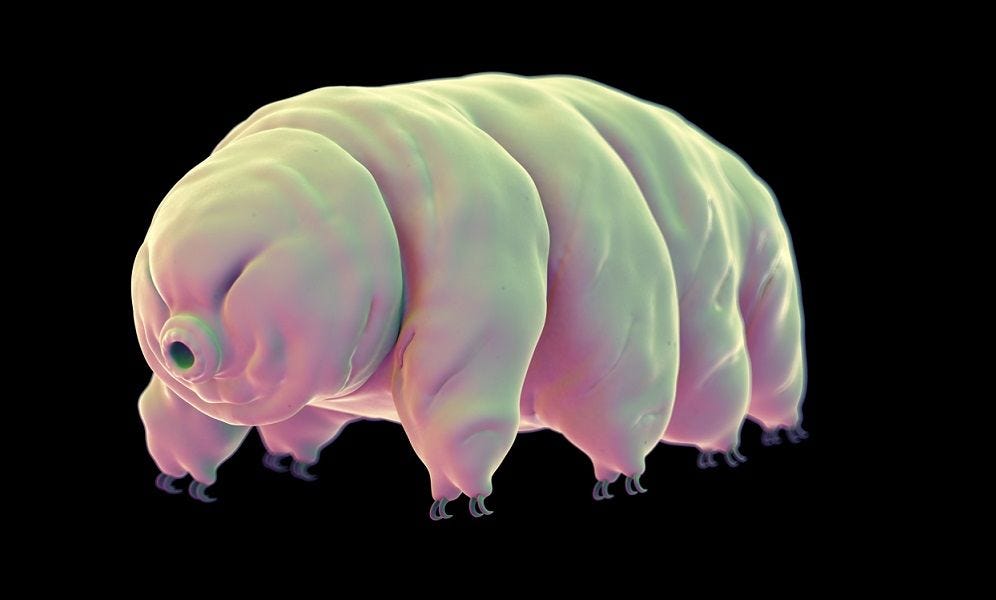Fingerprints of Our Ancient Alien Genetic Engineers
[8] - Anomalous Accelerated Regions in Human Non-Coding DNA
Human beings are not well suited for extended space travel, let alone the colonisation of alien worlds. Lower gravity erodes our muscles and bones while cosmic radiation destroys cells, damages DNA and can even be fatal.
While the cosmos is full of exoplanets we are yet to confirm that any have atmospheres identical to that of our Earth. Exoplanet environments will be significantly different to on our home planet. Even in our own world, there are many environments unsuitable for human life.
How might future Terran space explorers increase their durability for expanding outwards into the cosmos?
GMO Astronauts
The 2019 sci-fi movie, The Titan, tells the story of a U.S. Air Force fighter pilot who volunteers for a training program intended to prepare humans for extra-planetary colonisation. As events in the story progress several of the volunteers exhibit severe mental episodes and extreme health problems.
As the plot unfolds we learn that the training project is actually utilising illicit genetic enhancement technologies. The program leadership has gone rogue and is secretly splicing animal genes into the genome of the participants.
The film’s protagonist, Rick Janssen, is eventually left transformed into a very different kind of humanoid. The film ends with the genetically modified Janssen ably living on Saturns’s moon, Titan.
The premise of The Titan may initially sound rather far out, but NASA is already exploring genetic engineering technologies for use in future space travel. Chris Mason, a geneticist and associate professor of physiology and biophysics at Weill Cornell University in New York, is among the scientists investigating the genetic effects of spaceflight.
Professor Mason has suggested that for humans to expand into the solar system scientists might need to alter future astronauts through epigenetic engineering. This type of modification involves turning on or off the expression of specific genes.
There is another direction that scientists might take with respect to helping humans survive better in space, genetic hybridisation. It could be that human cells would be combined with DNA from other species exhibiting desirable traits. This hybridisation model is of course the premise examined in the film The Titan.
The almost indestructible micro-animal called tardigrades, also known as water bears, are seen as an organism with many potentially useful traits. genes from tardigrades could confer increased resistance to the harmful effects of spaceflight, especially with respect to cosmic radiation.
In early 2023, the Academy of Military Sciences in Beijing released details of their experiments involving the insertion of a gene from a water bear into human embryonic stem cells. Purportedly, the experimental results showed significantly increased cellular resistance to radiation.
We can see now that genetically modified astronauts are not a concept limited to the realms of science fiction, they are just a little way off in our future. Astronauts working in space aboard the International Space Station have already successfully used the DNA editing technologies, CRISPR/Cas9.
Alien Genetic Engineers
Humans are on a course towards utilizing genetic engineering in space exploration and planetary colonisation programs, it seems likely more advanced extraterrestrial civilizations would have mastered this technology.
Any space-faring biological species would come up against the same environmental challenges faced by humanity. Employing robots and AI craft in space exploration is one way around the problems. However, if biological entities want to expand into the cosmos they would appreciate the potential benefits of genetic enhancements.
If highly advanced alien lifeforms are based on DNA, or a very similar molecule and code, their technologies should make the editing of terrestrial organisms simple.
“What would last a hundred million years? Not much, but there are some things, like nuclear waste. Or any sort of biotechnology that has knock-on effects: If you tinkered with genomes a hundred million years ago, the traces of that would still be with us today.”
- Professor Paul Davies, Astrophysicist
We are told in the Churinga transmissions that the above scenario is the reality of things. The beings that travelled to Earth had genetic engineering facilities on their craft and used these to adapt their forms to new worlds.
Keep reading with a 7-day free trial
Subscribe to Technosignatures - The Search For Alien Technologies to keep reading this post and get 7 days of free access to the full post archives.






